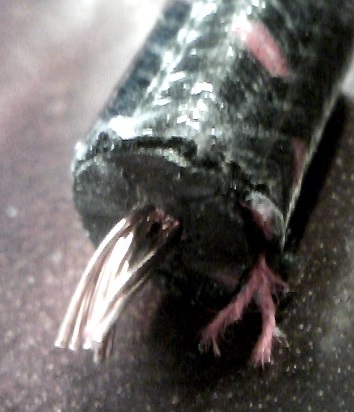|
| It's alive! It's aliiiiivvvve! |
| Author |
Message |
    
narrabay
Advanced Member
Username: narrabay
Post Number: 49
Registered: 02-2016
| | Posted on Friday, April 01, 2016 - 03:35 am: | 




|
Got my Palmer YT1 running today after making a buzz box ignition. It was surprising how many times I had to go over the relay wiring before I really understood it. But anyway, I had no way to get gas into the carb (no gas tank yet, working on that issue) but got it to run on prime fuel a few seconds.
There is another topic on buzz box and Miro made some great suggestions especially about using a resistor to reduce the current (and really make the battery last long) and also that a mylar capacitor worked for him as well as a $10 "condenser".
.http://www.oldmarineengine.com/discus/messages/3457/3079.html
Todays exercise got me used to where the timing lever likes to be, priming the engine, how to crank it, etc.
Tomorrow builds a wooden box for the battery, coil, relay "buzz box" package. Bought some pine for that today.
Also, for plug wire I ordered old cloth covered reproduction plug wire.
Also, took a peak inside the spark timing unit, pretty cool just a roller that passes a contact area and shunts that to ground on each power stroke TDC |
    
ernie
Senior Member
Username: ernie
Post Number: 2244
Registered: 01-2002

| | Posted on Friday, April 01, 2016 - 08:03 am: | 




|
Chris,
More connections and more components, usually not a good thing in a boat in salt air.
Just build the JB coil as JB drew it.
There are dozens and dozens of them running boats with no resistor in the primary.
Reducing primary current does the same in the secondary. None of us actually know exactly what point you will start getting a misfire or complete lack of fire in a marginal situation.
I have a Fairbanks Morse engine with a JB coil running a water pump that during the summer will run all day several days a week. I am using 2 little emergency light 6 volt gel batteries in series. I have not charged them in 2 years. Just for kicks I just went out and started it.
This being said I wouldn't do this in a boat.
As you saw I have 2 much bigger batteries that I use in my boat set up so I can use either or both.
I wish you had asked about plug wire. I would have given you some. The cloth covered wire looks neat but won't work well if damp. Stop by and I will give you some plain old black plug wire that will most likely work under water...
Hope this helps
Ernie |
    
narrabay
Advanced Member
Username: narrabay
Post Number: 50
Registered: 02-2016
| | Posted on Friday, April 01, 2016 - 01:11 pm: | 




|
Hi Ernie, great point about reducing secondary voltage which may work great on nice days but become marginal when wire degrades, dampness, etc. what I have now, is as jb drawn. and used tinned marine wire and connectors.
as you know there is no generator so I might measure current both ways just the same. also, on old cars recall that there as a "ballast" resistor which was bypassed when starting.
as to the vintage looking plug wire, it is stranded straight copper core, the jacket has a shiny plastic-like coating over the braid. under that is regular 7mm plug wire rubber insulator. Today I will make the wood box to throw all this and the odyssey 625 batt into and call it done.
just having fun with this thats all.
  |
    
jb_castagnos
Senior Member
Username: jb_castagnos
Post Number: 1148
Registered: 07-2002

| | Posted on Friday, April 01, 2016 - 10:14 pm: | 




|
Ernie's right about the wire, years ago we were all waiting at the dock to go out on a trip, 6 boats. 4 had the cloth covered wire, another boat and mine had plain rubber wire. A thunder storm came up and drenched everything, the two boats with the rubber wire were the only ones that started. All of the boats that run in the water now use plain rubber wire, the cloth is OK for a show engine. |
    
narrabay
Senior Member
Username: narrabay
Post Number: 55
Registered: 02-2016
| | Posted on Saturday, April 02, 2016 - 05:02 am: | 




|
sounds good jb, and I can of course keep the unused wire coiled in the ignition/battery box. |
    
narrabay
Senior Member
Username: narrabay
Post Number: 59
Registered: 02-2016
| | Posted on Saturday, April 02, 2016 - 08:32 pm: | 




|
OK I ran it briefly and here is the video. No tank hooked up so just what was in the float bowl. Learning the intricacies of the engine, such as how smooth it got when advancing the timing from the timing-retarded start position. Also dropped the float bowl and cleaned some flaky rust from the carb throat and blew out the jet passages. (Inside the bowl itself was very clean).
Also got a brass garden hose female with 1/2" barb to feed the water to the inlet hose.
Cast iron carb body and flat bowl!!!
Here's the video:
https://youtu.be/oVjQFFPAP-A |
    
narrabay
Senior Member
Username: narrabay
Post Number: 60
Registered: 02-2016
| | Posted on Saturday, April 02, 2016 - 10:41 pm: | 




|
Should say "cast iron body and float bowl" darn keyboard skipping lately!!!! |
|
|
|


|


